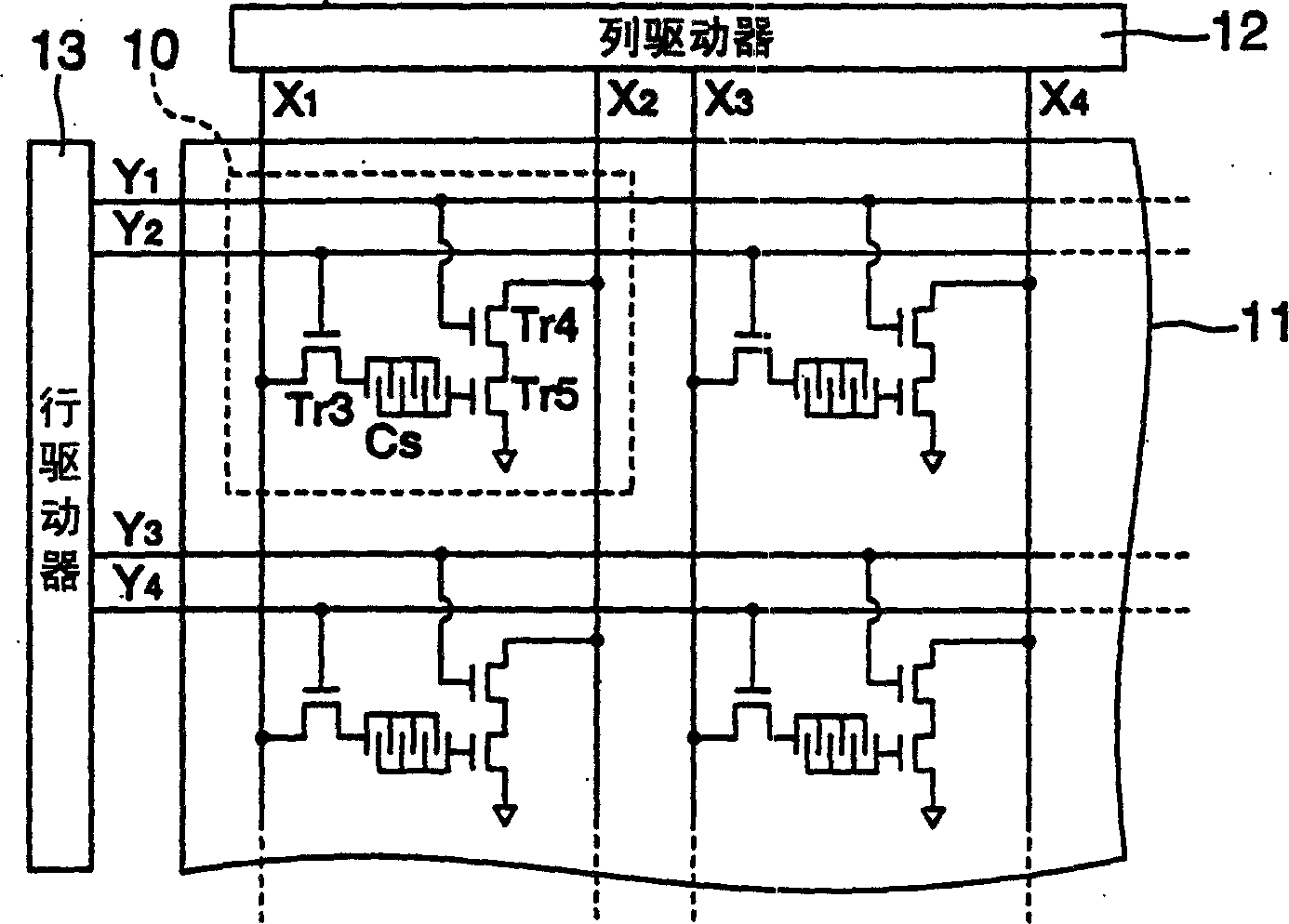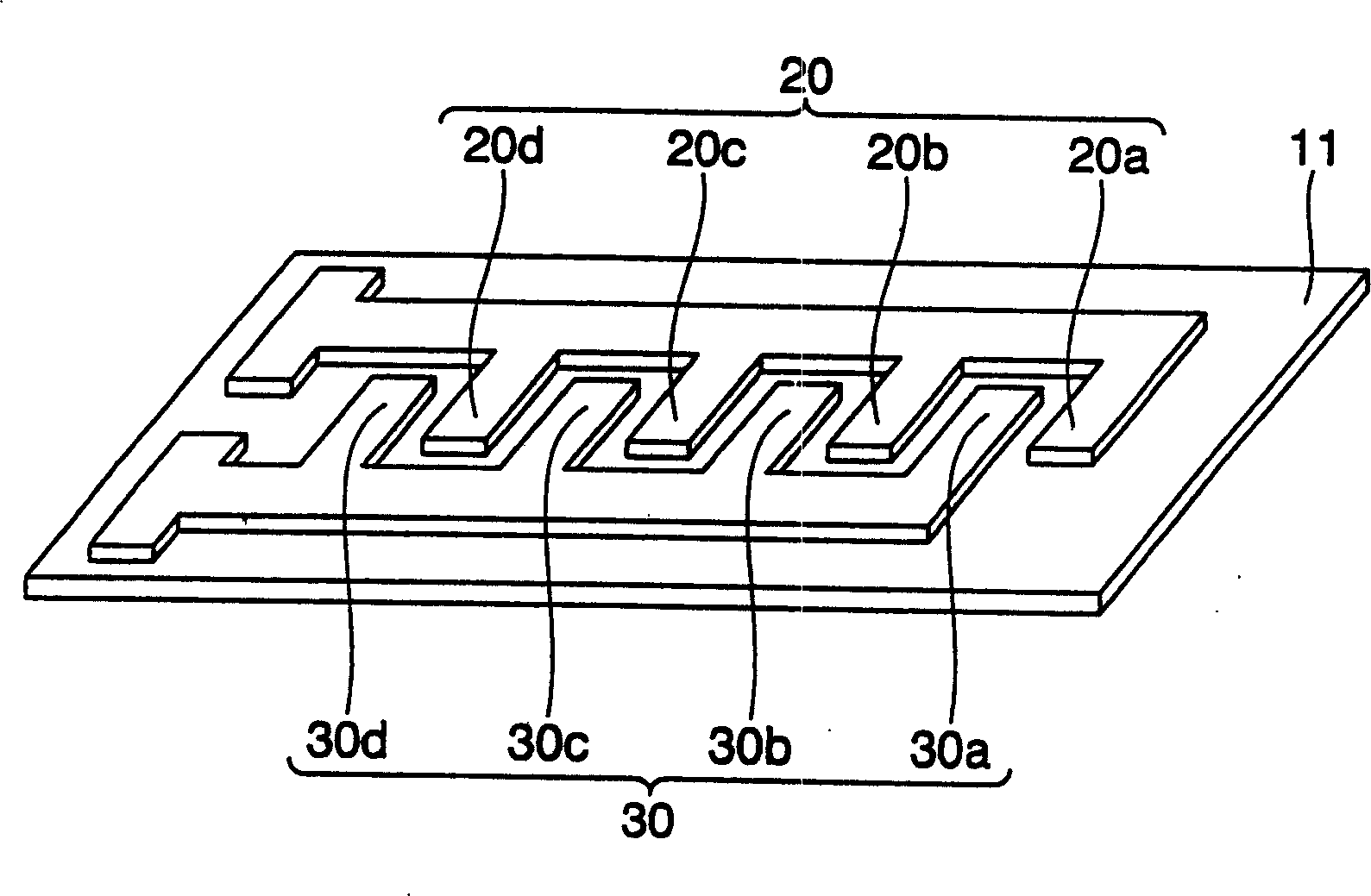Sensor cell, biosensor, capacitive device manufacturing method, biological reaction detection method, and gene analyzing method
A sensor unit and biosensor technology, applied in the field of biosensors, can solve problems such as inability to perform real-time detection, difficulty in real-time detection of hybridization, and large instruments
- Summary
- Abstract
- Description
- Claims
- Application Information
AI Technical Summary
Problems solved by technology
Method used
Image
Examples
Embodiment approach 1
[0038] figure 1It is the main circuit configuration diagram of the biosensor. This sensor is equipped with: the sensor unit 10 that is arranged in the matrix shape of N row M column on the substrate 11, constitutes sensor unit matrix; The column driver 12 of the column selection line X1, X2, ...; a group of sensor units 10 arranged side by side in the row direction of the sensor unit matrix is selected, and the drive is used to switch the sensor function on the sensor unit 10. Row selection line Y 1 , Y 2 , . . . the row driver 13 . The sensor unit 10 is a sensor for detecting the hybridization of the probe DNA and the target DNA in the reaction cell as an electrical signal, and is equipped with: a capacitor Cs for detecting DNA hybridization based on capacitance change; The switching transistor Tr1 for switch control of the sensing function; the converter (signal conversion element) that converts the hybridization between the probe DNA and the target DNA in the reaction...
Embodiment approach 2
[0050] Hereinafter, this embodiment will be described with reference to each drawing.
[0051] Figure 5 It is a top view of Embodiment 2 of a capacitor. In the present embodiment, by providing insulating film 40 between comb-shaped electrode 20 and comb-shaped electrode 30 facing each other at a slight interval, the distance between the opposing electrodes is made as narrow as possible. In this way, by narrowing the distance between the electrodes, the capacitance of the capacitor can be increased and the sensitivity of the sensor can be improved. The insulating film 40 is a film that isolates the comb-toothed electrodes 20 and the comb-toothed electrodes 30 without communication (short-circuiting), and can also be called a separation wall, a partition wall, a separation member, a separation member, or a partition. member. As the insulating film 40, for example, an organic insulating material such as polyimide is suitable. As described below, surface treatment with polyim...
Embodiment approach 3
[0060] Hereinafter, this embodiment will be described with reference to each drawing.
[0061] Figure 8 It is a plan view of Embodiment 3 of the capacitor Cs. In this embodiment, the capacitor Cs is constituted by a pair of arcuate opposing electrodes (electrodes 80 , 90 ). The electrode 80 includes substantially concentric electrode portions 80a, 80b, and 80c each having a different inner diameter, and the electrode 90 includes substantially concentric electrode portions 90a, 90b, and 90c each having a different inner diameter. In these electrode parts, the positive electrode and the negative electrode are arranged alternately, between the inner peripheral surface of the electrode part 80a and the outer peripheral surface of the electrode part 90a, between the inner peripheral surface of the electrode part 90a and the outer peripheral surface of the electrode part 80b, ..., the electrode A micro capacitor is formed between the inner peripheral surface of the portion 80c an...
PUM
 Login to View More
Login to View More Abstract
Description
Claims
Application Information
 Login to View More
Login to View More - R&D
- Intellectual Property
- Life Sciences
- Materials
- Tech Scout
- Unparalleled Data Quality
- Higher Quality Content
- 60% Fewer Hallucinations
Browse by: Latest US Patents, China's latest patents, Technical Efficacy Thesaurus, Application Domain, Technology Topic, Popular Technical Reports.
© 2025 PatSnap. All rights reserved.Legal|Privacy policy|Modern Slavery Act Transparency Statement|Sitemap|About US| Contact US: help@patsnap.com



